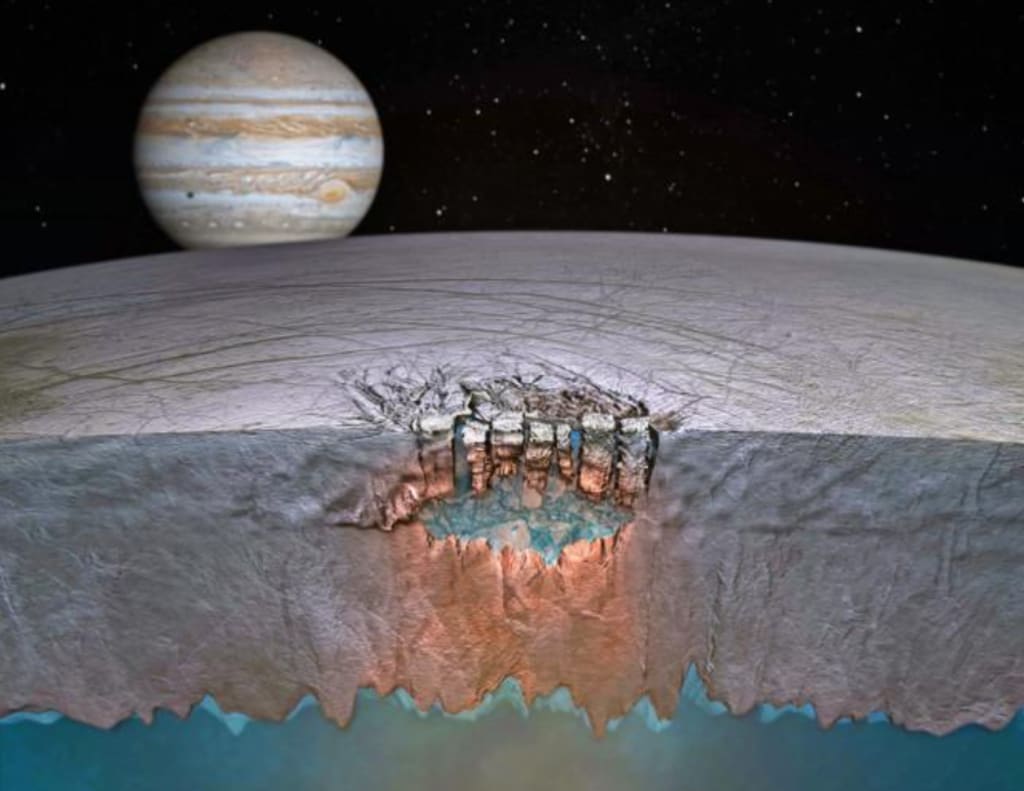
On January 8, 1610, Galileo, using an astronomical telescope of his invention, discovered the four large moons of Jupiter, which are Io, II, III, and IV.
Because Galileo used a small magnification of the astronomical telescope that day, at that time Io and Io were two objects but were recorded as one, this error was not corrected until the next day, but also officially announced the existence of the human discovery of Io.
For more than three hundred years after that, Io, which is smaller than the Moon, did not attract the attention of scientists, who, during observations in the 1960s, defined Io as a "dead star" surrounded by water and ice, because its equatorial temperature is only minus 133 degrees Celsius, and the polar temperature is minus 223 degrees Celsius.
When did people start to change their minds about it?
In 1979, Voyager II flew over Jupiter, the first time mankind to accurately image the Galilean moons, although the distance and resolution is extremely low, but still unveiled the mystery of Io, its surface texture as crisscrossed as blood vessels, so that all scientists were shocked.
In further studies, scientists found that Io has many "healed" surface cracks, and few large craters, which inferred that Io is geologically very active.
The first time I've ever seen a planet this small, where does it get the energy to support its continuous geological activity? After a long study, scientists found that Io, two, three, and three objects in a strange state of resonance, which is the closest to us in the universe a three-body resonance phenomenon.
The force generated by the resonance rubs the three moons like kneading dough, thus generating a huge amount of heat, which then supports its active geological movement.
After calculations, science has found that Io possesses enough heat to keep the ice near the rocky layer melting, thus having a global ocean. This is the first time humans have put forward the speculation that Io has an ocean.
In subsequent observations and studies, data from many probes have pointed to a massive global ocean hidden beneath Io's thick ice, which can reach depths of up to 100 kilometres.
Since the thickness of the glacier is about 20-30 km, according to the volume of Io can be concluded that the volume of the ocean on Io is about 2 to 3 times the volume of the ocean on Earth.
Although it is known that there are oceans on Io, and also know the approximate volume of the ocean, and the composition of this ocean, scientists have been very curious.
At first, it was speculated that the ocean composition was mainly magnesium sulfate salt, but in June 2019, Cal tech said that sodium chloride was found on the surface of Io, and the Hubble telescope observation data also support this finding, which inferred that the ocean on Io should be salty, almost indistinguishable from the seawater on Earth.
In addition, since Io has a thick layer of ice on its surface, under the influence of various cosmic radiations, water molecules will be broken down into hydrogen and oxygen elements, which then enter the ocean under the ice.
Richard Green berg, a scientist at the University of Arizona, estimated in 2009 that Io's oceans contain enough oxygen to support a complex ecosystem.
Oceans, oxygen, and geothermal heat - what comes to mind when you link these three keywords together? That's right, life.
On April 14, 2017, NASA held a press conference in Washington, D.C., where a shocking announcement was made - Io has all the conditions for life. In other words, it has all the chemical elements needed to nurture life on it, meaning that there is a high probability of life on Io.
Is there life?
Long before NASA announced this news, the speculation of life on Io has been known for a long time, for example, in the science fiction movie "Io Report" released in 2013, it was mentioned that an octopus creature lives in the huge ocean of Io.
Of course, the image of an octopus-like creature is not a random idea of the director's head, because the octopus hydrocephalus such as the nervous system are very different from any other creatures.
For example, vertebrates are through the brain to send instructions to the limbs, and then guide all the activities of the limbs, but octopus hydrocephalus such as different, their wrist feet are covered with neurons, these neurons can ignore brain instructions, independent operation of their own.
When making complex decisions, octopuses use their senses to gather relevant information and then integrate it. For example, they will first use the neurons covered with the wrist feet groping, once contact with something of interest, the brain in the wrist feet will immediately process the input signal, and then the signal back to command the wrist feet for the next action.
The octopus does not rely on the brain to command the wrist or foot, it has actually how to manipulate the body through this thinking process "outsourcing", divided into the various tentacles, and then the tentacles through the dense neurons for local control, thus achieving a very strong environmental improvisation.
It is worth mentioning that just because the octopus this very different from other creatures' abilities, many scientists believe that they are most likely not the Earth's native breeding creatures but by comets and other interstellar objects brought to Earth extraterrestrial life.
Although it is said that extraterrestrial life is not the same as extraterrestrial intelligent creatures, the scientific community now generally agreed that octopuses and humans, including vertebrates, are highly intelligent creatures.
In addition, because octopuses perceive their surroundings and environment interaction in a different way than other organisms, the scientific community believes that octopus cognition is an important cognitive alternative model that can help scientists understand and appreciate the evolution of organisms from low to high and then from high to intelligent.
If life can use comets, asteroids, meteorites, etc. as a dissemination platform, then the "Io report" in the "Europa I" probe to see the creatures may be true, Io is that huge ocean world, really hidden in some kind of highly intelligent creatures.
Of course, even if there is no advanced life in that ocean world, only some very simple life structure, it is still enough to make people excited, because it can at least prove that life in the universe may have universal, but also means that humans are not "alone".
About the Creator
Stajila
The progress of scientific research and its increasingly expanding fields will arouse our hope。






Comments
There are no comments for this story
Be the first to respond and start the conversation.